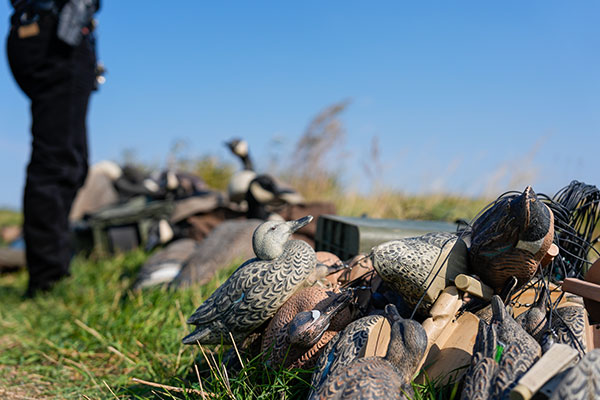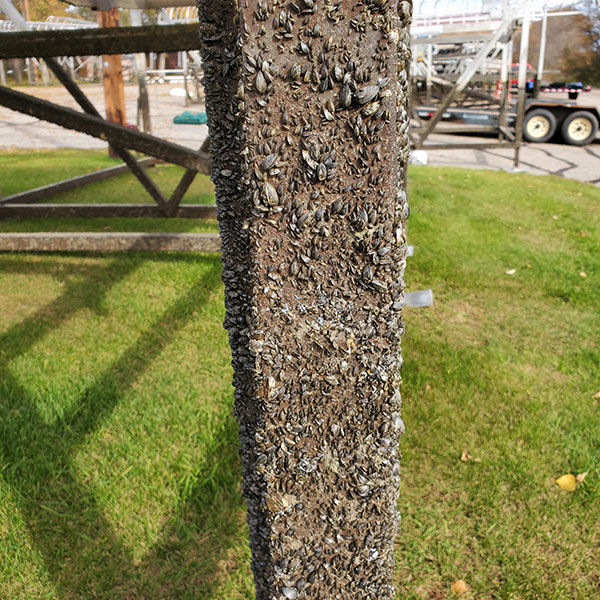
Buffaloberry Patch
ANS and Waterfowl Hunters
Eight Bighorn Sheep Licenses
The North Dakota Game and Fish Department allocated eight bighorn sheep licenses for the 2025 hunting season, one more than last year.
One license was issued in unit B1, one in B2, one in B3, three in B4 and one in B5. In addition, one license, as authorized under North Dakota Century Code, was auctioned in March by the Midwest Chapter of the Wild Sheep Foundation, from which all proceeds are used to enhance bighorn sheep management in North Dakota.
In total, 21,221 applicants applied for bighorn sheep.
PLOTS Public Use Regulations
The goal of the Private Land Open To Sportsmen program is to provide walk-in public access for hunting on private land. PLOTS agreements do not allow activities such as horseback riding, camping, placing bait for any purpose, driving ATVs or snowmobiles, dog training and many others, without written permission from the landowner.
The North Dakota Game and Fish has specific regulations that apply to public use on PLOTS tracts. By establishing these regulations, the Department can better fulfill its responsibility to private landowners and help protect property enrolled in the program. In addition, the regulations provide clarity to hunters, and law enforcement officers are in a better position to enforce activities on PLOTS property.
Duck Boat Safety
Waterfowlers hunting from boats are encouraged to wear properly fitted life jackets while on the water.
Hunting coats with life jackets built in are light and comfortable to wear. In addition, wearing a life jacket will not only keep the overboard hunter afloat, but also slow the loss of critical body heat caused by exposure to cold water.
Capsizing and falling overboard from small boats are the most common types of fatal boating accidents for hunters.
Check for Zebra Mussels
Order 2026 OUTDOORS Calendars
The North Dakota Game and Fish Department is taking orders for its North Dakota OUTDOORS calendar, the source for all hunting season and application dates for 2026. Along with color photographs of North Dakota’s wildlife and outstanding scenery, it also includes sunrise-sunset times and moon phases.
Calendars must be ordered online.
The calendar is the North Dakota OUTDOORS magazine’s December issue, so current subscribers will automatically receive it in the mail.
Staff Notes
Department Staff Win Governor’s Awards
The North Dakota Game and Fish Department’s state wildlife management area staff was awarded the Strength from the Soil Award at the 2025 Governor’s Awards for Excellence in Public Service in September. The award went to the team that advanced agriculture or natural resources innovation in North Dakota through cross-agency or cross-community involvement. The Department WMA staff was recognized for their innovative approach in building partnerships with local livestock producers and implementing managed grazing systems to help restore prairie landscapes, improve nesting cover for upland birds and enhance forage diversity for deer and other big game.
Game and Fish staff were also involved with the October Wildfire Unified Command, which won the Roaming Bison Award for coordinating the efforts of more than 15 agencies to protect North Dakota residents and communities from historic wildfires that burned over 118,000 acres and caused millions of dollars in damage in October 2024.
Zebra Mussels Discovered in Smishek Lake
The North Dakota Game and Fish Department has confirmed the presence of invasive zebra mussels in Smishek Lake, Burke County, after detecting zebra mussel veligers in routine plankton tow net samples.
Ben Holen, Department aquatic nuisance species coordinator, said subsequent follow-up sampling found additional adult mussels in the lake.
The 195-acre lake is a popular recreation destination located 4.8 miles north of Powers Lake.
Smishek Lake is now considered a Class I ANS infested water. Emergency rules will go into effect immediately to prohibit the movement of water away from the lake, including water for transferring bait. Notices will be posted at lake access sites. With input from partners, the Game and Fish Department is currently evaluating containment and treatment options on Smishek Lake to minimize the spread of zebra mussels in the region.
Zebra mussels are just one of the nonnative aquatic species that threaten our waters and native wildlife. After using any body of water, people must remember to follow North Dakota regulations:
- Remove aquatic vegetation before leaving the water access and do not import into North Dakota.
- Drain all water before leaving the water access.
- Remove drain plugs and devices that hold back water and leave open and out during transport.
- Do not import aquatic bait into the state. For Class I ANS infested waters, aquatic bait cannot be transported away from the water. In all other areas, bait must be transported in a container that holds 5 gallons or less. Remember that it is illegal to dump unused bait on shore or into the lake.
- All docks, lifts and related equipment must be dried and left out of water for at least 21 days before being placed in another water.
In addition to North Dakota regulations, Game and Fish strongly recommends:
- Avoid mooring your watercraft in zebra mussels infested waters.
- Clean – remove plants, animals and excessive mud prior to leaving a water access.
- Drain – drain all water prior to leaving a water access.
- Dry – allow equipment to dry completely before using again or disinfect.
For more information about ANS in North Dakota, options for disinfection, or to report a possible ANS, visit the Game and Fish website at gf.nd.gov/ans.




